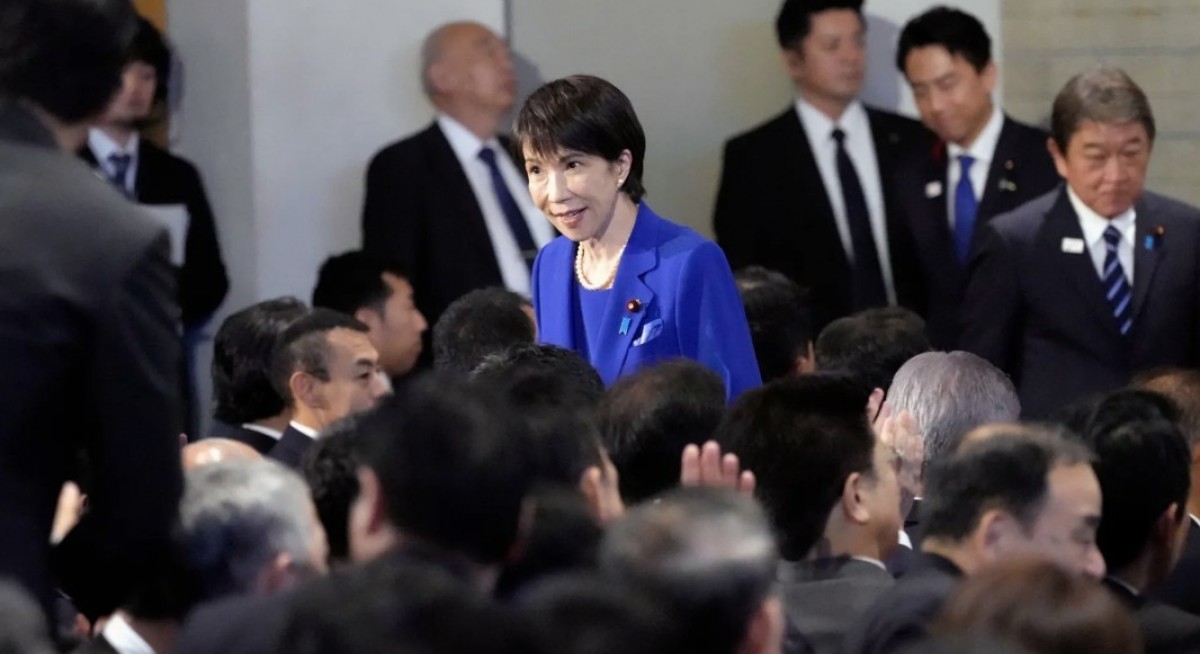Given the once-dominant party’s loss of its majorities in both chambers of the legislature, the new leader will also need to reach out to some of the opposition parties to pass legislation and budgets. While she’s expected to break Japan’s highest glass ceiling, she’s generally touted conservative values and it’s unclear whether she’ll bring about progress on women’s issues.
Shortly after being elected LDP leader, Takaichi took to the stage to address her fellow party lawmakers with a message that they will have to roll up their sleeves and get to work.
“Rather than feeling happy right now, I am thinking about the hardships that are yet to come. There is a mountain of things that we must accomplish together,” she said. “I would like to see you work like horses. I’m going to abandon the phrase ‘work-life balance,’” she said, prompting laughter from the rows of LDP lawmakers listening to her speech.
Five contenders competed for ballots in the first round of voting. In the run-off between the top two candidates, Takaichi secured 185 votes in total against political scion Shinjiro Koizumi’s 156. More votes also went to Takaichi than Koizumi in the first round, particularly among the party’s around 916,000 rank-and-file party members.
See also: Japan to issue over US$73.5 bil in new bonds to fund stimulus
Takaichi will face a parliamentary vote later this month to become premier, a contest expected to go to the LDP chief given the fragmentation among the opposition parties. A victory for Takaichi in that vote would mark the emergence of Japan’s first female premier.
For a country that has seen limited progress on gender equality, especially in politics, that could represent a watershed moment. Japan ranks 118th out of 148 countries in the World Economic Forum’s Gender Gap Index, trailing behind nations such as Senegal and Angola.
Meanwhile the former economic security minister is likely to face a key diplomatic test less than a month into the job. President Donald Trump is expected to pass through Asia in the coming weeks and could meet the new Japanese leader in Japan or on the sidelines of multilateral meetings in the region depending on schedules and attendance.
See also: Japan approves US$135b stimulus to mitigate inflation pain
Japan has largely wrapped up its trade deal with the United States and has secured the lowering of auto tariffs to 15%. But the implementation of a $550 billion investment fund in the US could still cause issues, while Washington’s demands on defense spending by its allies may also become a talking point.
On the investment vehicle, Takaichi said late last month that a renegotiation of the trade deal with the US could be on the table if the implementation doesn’t serve Japan’s interests. In her press conference Oct 4, she said she won’t be overturning existing agreements with the US, but added that Japan will make its opinions known if the implementation of the deal goes against its interests.
Takaichi is known to be fiscally expansionist and politically right-wing. A protege of the late prime minister Shinzo Abe, she’s also prompted views that her taking the LDP’s helm will move the country backward toward Abenomics. She’s also known for citing former UK Prime Minister Margaret Thatcher as an inspiration.
Her pro-stimulus stance may have an impact on markets.
Takaichi says she will ensure her active fiscal policy is “responsible” as she looks to boost growth. She has also called for monetary policy to stay easy, saying that the Bank of Japan shouldn’t raise borrowing costs, Kyodo News reported Oct 2, citing a survey. Those views may help weaken the yen and boost stocks while pushing up super-long government debt yields.
On Oct 4 she said that the government is responsible for both fiscal and monetary policy, and the BOJ is responsible for coming up with the best methods on monetary policy.
In a move that would likely anger China, Takaichi has also said she hopes to continue visiting Yasukuni shrine in Tokyo. The shrine is seen as symbolizing Japan’s past militarism. After being elected leader, her tone was a little vaguer.
“This shouldn’t become a diplomatic issue,” she said. “I’ll make appropriate decisions at the appropriate time on praying for peace.”




